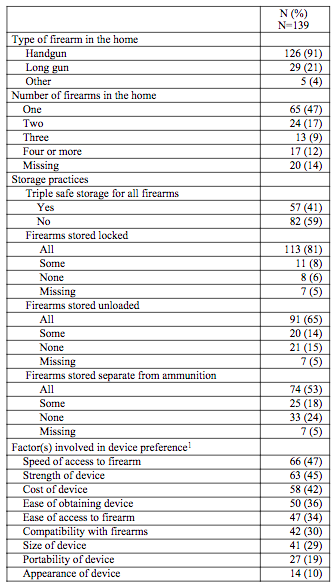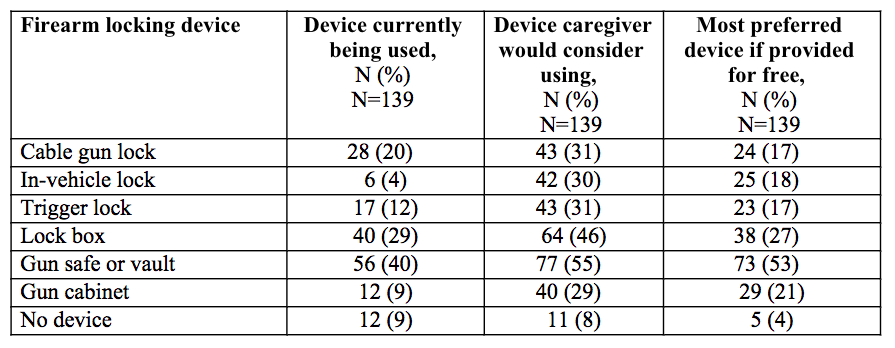Injury Prevention 2
Session: Injury Prevention 2
423 - Understanding Caregiver Preferences for Firearm Locking Devices in a Pediatric Emergency Department
Sunday, April 27, 2025
8:30am - 10:45am HST
Publication Number: 423.6577
Tyler Lennon, Medical College of Wisconsin, Milwaukee, WI, United States; Samaa Kemal, Ann & Robert H. Lurie Children's Hospital of Chicago, Chicago, IL, United States; Sanjana Shankar, Ann & Robert H. Lurie Children's Hospital of Chicago, South Barrington, IL, United States; Robert Tunick, Ann & Robert H. Lurie Children's Hospital of Chicago, New York, NY, United States; Doug Lorenz, University of Louisville, Louisville, KY, United States; Jennifer Hoffmann, Northwestern University, Ann & Robert H. Lurie Children's Hospital of Chicago, Chicago, IL, United States

Tyler Lennon, MD, MPH (he/him/his)
Assistant Professor of Pediatrics
Medical College of Wisconsin
Milwaukee, Wisconsin, United States
Presenting Author(s)
Background: Around 40% of US households with children have a firearm kept in the home. However, currently an estimated 4.6 million children live in households with at least one unsafely stored firearm.
Objective: This study sought to describe firearm storage practices and locking device preferences among caregivers of children presenting to a pediatric emergency department (ED).
Design/Methods: We conducted a cross-sectional survey of caregivers of children presenting to a pediatric ED at an urban academic children's hospital who endorsed having a firearm in the home from August 2023 to May 2024. A self-administered electronic survey inquired about current firearm storage practices and locking device preferences. Caregivers who endorsed any unsafe firearm storage practice (i.e., firearm stored unlocked, loaded, and/or with ammunition) were offered, based on their preference, a free cable gun lock, lock box, or gun safe along with safe firearm storage education materials. Caregivers given a device were surveyed 30 days later to reevaluate firearm storage behavior. McNemar’s test was used to evaluate differences in reported baseline locking device use. Wilcoxon signed rank test was used to evaluate changes in storage behaviors (locked, unloaded, and stored separate from ammunition) from baseline to 30-day follow-up.
Results: Of 139 caregivers with a firearm in the home, 91% (n=126) reported having a handgun and 41% (n=57) reported storing firearms with triple safe storage (Table 1). Safes/vaults were more frequently used (40%, n=56) than cable gun locks (20%, n=28) (p = .003) (Table 2). Factors involved in caregiver preference for firearm locking devices were: speed of access to firearms (47%, n= 66), strength of the device (45%, n=63), and cost of device (42%, n=58). Seventeen caregivers were provided a free device based on preference: 15 gun safes, 2 lock boxes, and 0 cable gun locks. At 30-day follow up, 70.6% (n=12) of eligible caregivers responded, and the proportion of respondents who reported storing all firearms locked increased significantly from baseline (from 67% to 100%, p=0.036).
Conclusion(s): Caregivers in a pediatric ED reported using safes more frequently than cable gun locks. When offered a choice of firearm storage devices, gun safes were chosen most often. After being provided a free device of their preference, all caregivers who completed follow-up surveys reported all firearms were locked. Healthcare organizations and community organizations should align resources with caregiver preferences to enhance uptake of safe firearm storage practices.
Table 1. Firearm Storage Practices and Preferences Among Caregivers in the Pediatric Emergency Department with a Firearm in the Home
 1 Percentages add to over 100% because caregivers could select more than one factor involved in device preference.
1 Percentages add to over 100% because caregivers could select more than one factor involved in device preference. Table 2. Current Use of and Preferences for Firearm Locking Devices among Caregivers in the Pediatric Emergency Department

Table 1. Firearm Storage Practices and Preferences Among Caregivers in the Pediatric Emergency Department with a Firearm in the Home
 1 Percentages add to over 100% because caregivers could select more than one factor involved in device preference.
1 Percentages add to over 100% because caregivers could select more than one factor involved in device preference. Table 2. Current Use of and Preferences for Firearm Locking Devices among Caregivers in the Pediatric Emergency Department


